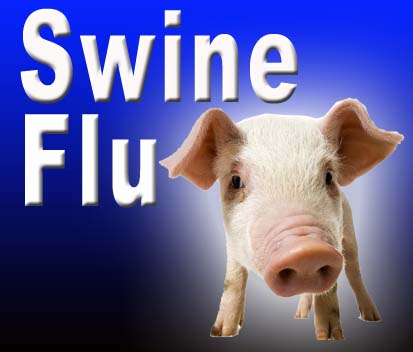Avian flu study offers insight into swine flu outbreak
 Washington, April 30 : A new study examining the mechanisms underlying transmission of combined avian-human viruses has shed light on how virus outbreaks like that of the current swine flu come about.
Washington, April 30 : A new study examining the mechanisms underlying transmission of combined avian-human viruses has shed light on how virus outbreaks like that of the current swine flu come about.
The study, conducted by University of Maryland researchers, suggests that the ease with which a dangerous avian influenza virus can cause a human flu pandemic may be greater than previously thought.
In his study, associate Professor Daniel Perez from the University of Maryland has shown that after an avian and human-like virus combine, the virus requires relatively few mutations to spread rapidly between mammals by respiratory droplets.
"This is similar to the method by which the current swine influenza strain likely formed," said Perez, program director of the University of Maryland-based Prevention and Control of Avian Influenza Coordinated Agricultural Project, AICAP.
"The virus formed when avian, swine, and human-like viruses combined in a pig to make a new virus. After mutating to be able to spread by respiratory droplets and infect humans, it is now spreading between humans by sneezing and coughing," he added.
Generally, avian flu viruses infect birds, and human viruses infect humans. Because their immune systems ''remember'' what the viruses look like from previous exposures, humans and birds tend to have some level of immunity to their respective viruses.
Although avian flu viruses do sometimes infect humans and cause severe illness, these viruses do not transmit easily from human to human so the spread is rare.
A problem arises when an intermediary species that can host both avian and human-like viruses, such a pig, is infected with both types of virus.
In cases like this, the viruses can combine in the host to make hybrid avian-human viruses. These viruses can infect humans but escape the immune response because their surface proteins are foreign to the immune system.
While these viruses can cause serious illness, they are generally not passed easily between humans. However, Perez has shown that this type of virus can fairly easily mutate to spread quickly and potentially cause a human pandemic.
In his study, Perez used the avian H9N2 influenza virus, one that is on the list of candidates for human pandemic potential. Using reverse genetics, a technique whereby individual genes from viruses are separated, selected, and put back together, Perez and his team created a hybrid human-avian virus.
Their research hybrid had internal human flu genes and surface avian flu genes from the H9N2 virus. While similar in origin to the swine flu virus, in that it involved a combination of avian and human influenza viruses, the lab virus came from a different strain of virus than the H1N1 virus now causing the swine flu outbreak.
Perez infected ferrets (considered a good model for human influenza transmission) with the virus he created, and allowed the virus to mutate in the species. Before long, healthy ferrets that shared air space but not physical space with the infected ferret had the virus, showing that the virus had mutated to spread by respiratory droplets.
When the genetic sequences of the mutant virus and original hybrid virus were compared, they found only two surface mutations responsible for supporting respiratory droplet transmission.
Because so few mutations were necessary to make the hybrid H9N2 transmissible this way, they concluded that after an animal-human hybrid influenza virus forms in nature, a human pandemic of this virus is potentially just a few mutations away.
"We do not know if the mutations we saw in the lab are the same that have made the H1N1 swine flu transmissible by respiratory droplets. We will be doing more research on the current swine flu strain to study its specific genetic mutations," Perez said.
The study was published last week in the Proceedings of the National Academy of Sciences. (ANI)